cykl Mater Dolorosa/cycle Mater Dolorosa
Portfolio » cykl Mater Dolorosa/cycle Mater Dolorosa
W dzisiejszym świecie obserwujemy rosnącą falę nienawiści. Jej podłoże jest złożone. Z jednej strony lęki, stanowiące podstawowy fundament agresji jako takiej, z drugiej tendencje do oceniania i osądzania innych ludzi – to tylko część tego podłoża ale część o ogromnym dla niego znaczeniu. Szczególnie nasilona jest wyrosła na tych fundamentach niechęć do wszelkich przejawów inności w drugim człowieku. Nastroje nacjonalistyczne, rasizm, ksenofobia i szereg innych podobnych zjawisk dzieli świat na niezliczone nisze przestrzenno-mentalne. Fenomenologiczna koncepcja miejsca Christiana Norberga-Schultza uznająca m.in. znaczenie podziału na „wewnątrz” i „zewnątrz”, na „insidera” i „outsidera”, dającego człowiekowi w swej pierwotnej istocie poczucie bezpieczeństwa, dziś nam to bezpieczeństwo odbiera, gdy zdamy sobie sprawę, że jako outsiderzy możemy stać się wrogami i ofiarami insiderów. Jesteśmy przecież zawsze poza jakimś miejscem, w którym groźni rezydenci osądzą nas i skażą za poglądy, postawy, pochodzenie lub cokolwiek innego budującego odmienność naszej osobowości.
Czy można przyjąć takie podejście, w którym naczelnym miejscem stanie się Ziemia a my wszyscy będziemy w niej Insiderami? Nie wiem. Ale starając się znaleźć uczucie właściwe wszystkim ludziom, bezwzględnie akceptowane a równocześnie rozumiane, wywołujące empatię przekraczającą przepaść mentalnej granicy między „nami” a „nimi”, znalazłam ból Matki, której dziecko doznaje cierpienia – z różnych powodów i w różny sposób. Ból taki ma charakter pierwotny i siłę oddziaływania nie tylko ogólnoludzką ale wręcz ponadgatunkową. Ból zwierzęcia tracącego swoje młode jest przez nas rozumiany instynktownie i równie instynktownie współodczuwany. Tym bardziej będziemy współodczuwać ból matki-człowieka, niezależnie od jej „inności”. Może takie współodczuwanie będzie silniejsze od niechęci i lęku. Silniejsze od poczucia wyższości lub niższości. Od pokusy osądu i pogardy. Może będzie jednoczyć zamiast dzielić. Skoro potrafimy to samo czuć, skoro cierpimy tak samo w sytuacji, która może przecież stać się naszą, może jednak nie jesteśmy inni…
In today's world, we observe a growing wave of hate. Its grounds are complex. On the one hand, fears, which are the basic foundation of aggression as such, on the other hand, tend to evaluate and judge other people - it is only a part of those grounds, but a part of great importance. In particular we can observe aversion to any forms of distinctness in other man. Nationalist sentiments, racism, xenophobia and many other similar phenomena divide the world into innumerable spatial-mental niches. Phenomenological concept of place by Christian Norberg-Schultz, recognizing, inter alia, the dichotomy between “inside” and “outside” , “insiders” and “outsiders”, dichotomy that gives people a sense of security in their primary sense, today tends to deprive us our security when we realize that, as “outsiders”, we can become enemies and victims of “insiders”. We are always beyond any place where formidable residents will judge us and condemn us for views, attitudes, backgrounds, or anything else that builds our personality.
Can we adopt such an approach where the Earth will become our main place and we will all be Insiders in it? I do not know. But trying to find a feeling that is relevant to all people, absolutely accepted, understandable and arousing empathy, breaking a mental barrier between "us" and "them," I have found the pain of the Mother whose child is suffering - for various reasons and in different ways. Such pain is primordial and its power of impact is not only universal but even super-species. The pain of an animal losing its offspring evokes our instinctive compassion and co-feelings. All the more we will share a feeling of the pain of a human mother, regardless of her "otherness". Maybe such compassion will be stronger than reluctance and fear. Stronger than a sense of superiority or inferiority. Than the temptation of judgment and contempt. Maybe it will unite instead of sharing. Since we can feel the same, since we can equally suffer in a situation that may be ours, maybe, anyway, we are not different…
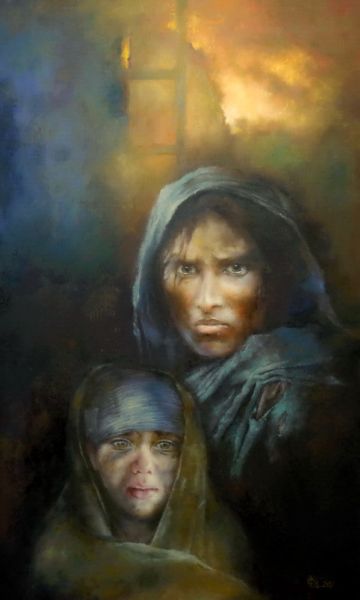 Mater Dolorosa – Zgliszcza (olej 60x100 cm)/ Mater Dolorosa – Destruction (oil 60x100 cm)
Mater Dolorosa – Zgliszcza (olej 60x100 cm)/ Mater Dolorosa – Destruction (oil 60x100 cm)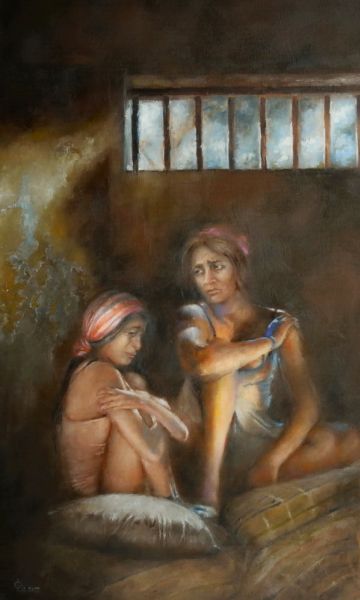 Mater Dolorosa – Izolacja (olej 60x100 cm)/ Mater Dolorosa – Isolation (oil 60x100 cm)
Mater Dolorosa – Izolacja (olej 60x100 cm)/ Mater Dolorosa – Isolation (oil 60x100 cm)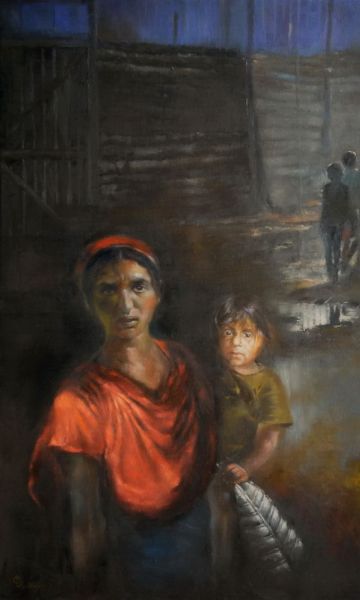 Mater Dolorosa – Wykluczenie (olej 60x100 cm)/ Mater Dolorosa – Exclusion (oil 60x100 cm)
Mater Dolorosa – Wykluczenie (olej 60x100 cm)/ Mater Dolorosa – Exclusion (oil 60x100 cm)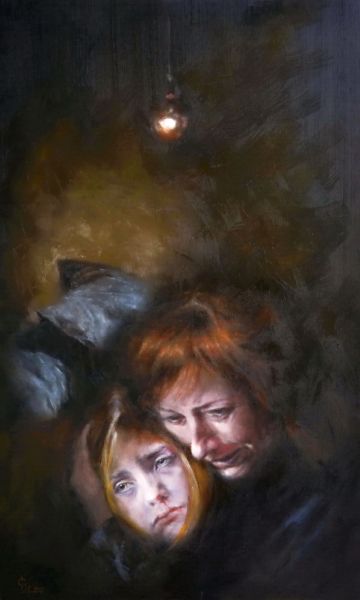 Mater Dolorosa – Przemoc (olej 60x100 cm)/ Mater Dolorosa – Violence (oil 60x100 cm)
Mater Dolorosa – Przemoc (olej 60x100 cm)/ Mater Dolorosa – Violence (oil 60x100 cm)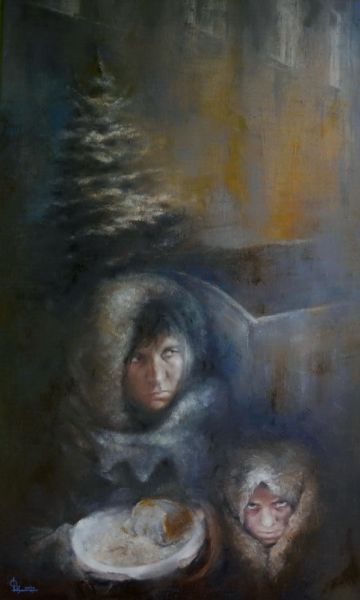 Mater Dolorosa – Bez domu (olej 60x100 cm)/ Mater Dolorosa – Out of Home (oil 60x100 cm)
Mater Dolorosa – Bez domu (olej 60x100 cm)/ Mater Dolorosa – Out of Home (oil 60x100 cm)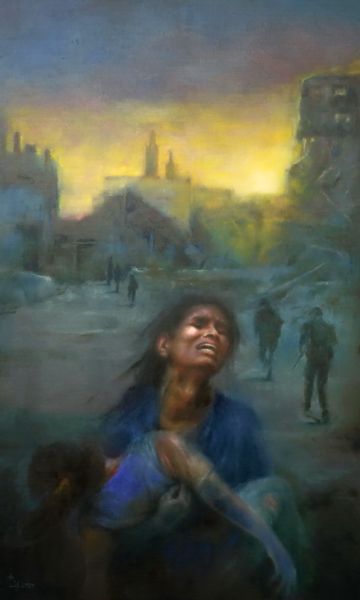 Mater Dolorosa – Ucieczka (olej 60x100 cm)/ Mater Dolorosa – Escape (oil 60x100 cm)
Mater Dolorosa – Ucieczka (olej 60x100 cm)/ Mater Dolorosa – Escape (oil 60x100 cm)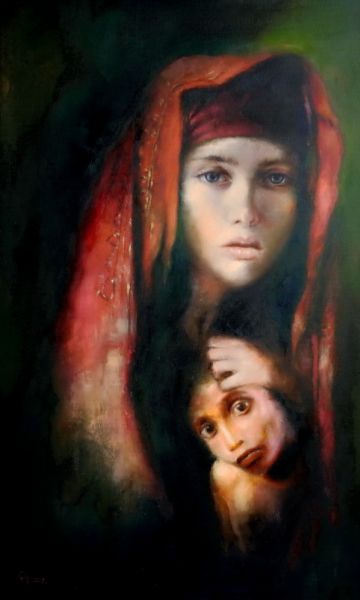 Mater Dolorosa – Wszystkie Dzieci są Moje (olej 60x100 cm)/ Mater Dolorosa - All the Children are Mine (oil 60x100 cm)
Mater Dolorosa – Wszystkie Dzieci są Moje (olej 60x100 cm)/ Mater Dolorosa - All the Children are Mine (oil 60x100 cm)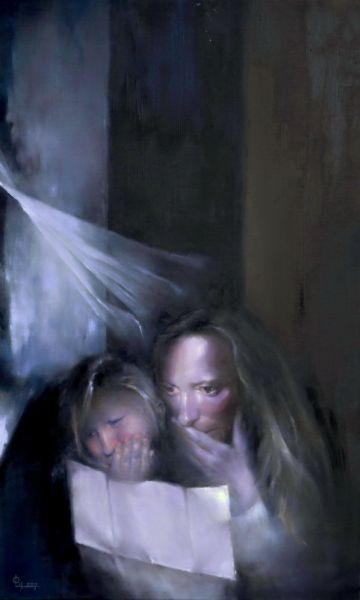 Mater Dolorosa – List (olej 60x100 cm)/ Mater Dolorosa – Letter (oil 60x100 cm)
Mater Dolorosa – List (olej 60x100 cm)/ Mater Dolorosa – Letter (oil 60x100 cm)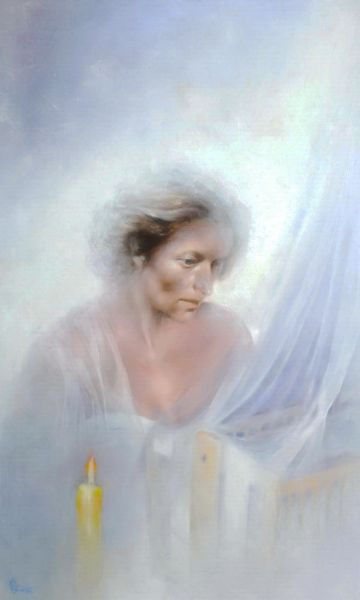 Mater Dolorosa – Pamięć (olej 60x100 cm)/ Mater Dolorosa – Memory (oil 60x100 cm)
Mater Dolorosa – Pamięć (olej 60x100 cm)/ Mater Dolorosa – Memory (oil 60x100 cm)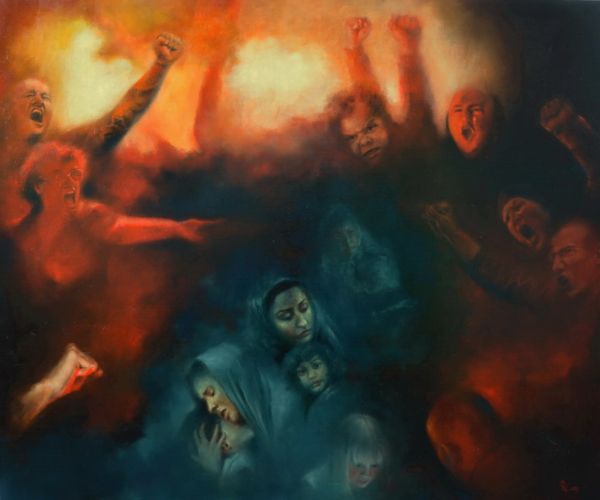 Tomorrow belongs to me (olej 120x100 cm)/(oil 120x100 cm)
Tomorrow belongs to me (olej 120x100 cm)/(oil 120x100 cm)

